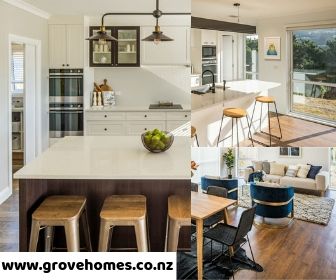In a perfect world, both
homeowners and home builders should understand each other completely and they
should coordinate properly throughout the building or remodelling project.
Unfortunately, that is not the world we live in, &
sometimes misunderstandings may occur. But, arguments don’t have to arise from
these misunderstandings.
While going through any custom home building or remodelling
project, there’re a few common points that tend to arise.
1. The homeowner thinks: adding two more windows
to the home cost me more? I’m already paying a lot for this house:
- You are paying a lot of money for
your custom home, and you want it to be completely perfect.
- No one can argue with that
sentiment. The problem is that builders are faulty creatures and things can get
lost in communication.
- To avoid any kinds of issues, it
is important to have open and clear communication.
2. Homeowner believes that the walk-through list
is not completed:
- At the end of the project, the homeowner
and the builder have to do a walk-through to make sure that all tasks get
completed to the homeowner’s satisfaction.
- As a homeowner, do not continually add to
the list of to-do items, because it can give you the perception that the to-do
list is never completed, and it can also frustrate the builder.
- If you find that you would like to make
some modification further, start a new list so that you can see what was agreed
upon initially, and what was added later.
3. The homeowner thinks: I am paying for a quality
home and it is not perfect. I want it done right:
- You are right to expect quality. Builders are people and therefore imperfect and they use imperfect materials.
- Before signing a contract, the homeowner
& the builder must clearly outline their expectations.
- And if you are not sure, your
builder can help you know what’s realistic and what is not in your home
building project.
- By capturing this on paper you
can avoid arguments.
4. The builder thinks: The homeowner is asking
for changes, but I don't think he has sufficient funds to pay for them:
- Agree in writing about any changes. It is
also a good idea for the homeowner to pay for changes when they happen and don’t
wait until the end of the job.
-
- By doing so, there’ll be no financial
surprises and it can keep both parties on good terms.
5. The homeowner thinks: My custom home
builder is not taking my concerns seriously.
- It’s a smart idea to have
regularly, maybe weekly, scheduled meetings with your builder.
- This can allow you to talk about
any changes, update the schedule, voice your concerns etc.
- Regular meetings
will also allow you to address concerns.
6. Scenario: The homeowner goes straight to
the subcontractor for a task rather than the builder:
- This can create confusion, making
the life of the project longer. All requests must go directly to the builder.
7. The homeowner talks to everyone except the
builder about what's going on with the project:
- Especially when dealing with problems it’s
important to have communication that is truthful and open with your builder.
- It’s important to have a good relationship
with your builder; so don’t hurt that relationship.
8. The homeowner continuously predict the
builder:
- Take your time at the start of
the project to interview your builder, and then gain a high level of trust in
his/her abilities.
- Make sure that you feel really
good about your home builder.
- After you hire him, let him do
his job. If you’ve any questions or concerns, you must feel free for
clarification, but don't question his judgment.
- You need to respect his/her
professionalism.
Conclusion:
When creating a custom dwelling, there can be a lot of misinterpretations
in between you and your builder.
This post shares what to be knowledgeable of throughout the
course of action and how you can prevent pointless arguments.
About Author:
Grove Homes is a family owned and operated business with 40
years experience in the New Zealand building industry.
We’re well established
homebuilders in Wellington. We love all things building, and keep ahead of the
latest building techniques, products, architectural trends and industry
standards.
We meet our client’s expectations and industry expectations
every time.

